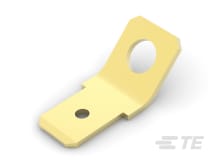Interesting. Does anyone have photos of what this all looks like before and after? Difficult to visualize what’s going on here.
How to fuse bypass in Magnepan 1.7i
Anyone bypassed the fuse on a 1.7i specifically? I read that it's a simple move of the wires but this wasn't the case for me. As you can see in the first photo, the yellow wire connector is stamped to the fuse box, and the yellow wire crimped on pretty tight. I gave it some decent force and it wasn't budging.
I've also heard the Cardas small post works fine, but again this wasn't the case for me. The Cardas post was slightly too large in diameter for the Magenepan wire connector to fit over.
Anyone who has done this and could offer some guidance as to how you accomplished it?
Thanks in advance!



If the black wire and the yellow wire are using same size female connector, and if you want to bypass the fuse and jumper/attenuator altogether, you can use a 3 way adapter to connect both black and yellow wire to the upper negative binding post. 3 WAY ADAPTER, DUAL MALE TO SINGLE FEMALE, QUICK DISCONNECT
|
Thanks @imhififan ! I tried getting the spade connector off but will give it a hold with pliers. Need to source some male connectors as well. Will report back! |
The yellow wire is connected to the fuse block via quick disconnect terminal, what you need is use a pliers to pull it out from the fuse block.
Then install a male connector ( you might need to enlarge the hole to fit into the binding post ) on the binding post that was soldered with black wire and push in the yellow wire.
That's it !!! The fuse is bypassed now, It's that simple.
|
@bdp24 On the Magnepan 1.7i, it does require an irreversible mod. You have to cut the yellow wire going to the fuse block, and then resolder it to the post. |
What I'm hearing is that maybe something changed in the past, what used to be a "10 minute unscrewing of the back plate and moving wires" now requires cutting the yellow wire to the fuse box and resoldering onto the post. Given that, I might be out for this mod. I'm good with a reversible change of wires, but not so keen on cutting and resoldering. |
My suggestion is use a pair of 1/8"x4"x4" aluminum plates drill some holes for new binding posts. https://www.ebay.com/itm/322424383436?hash=item4b11fda7cc:g:8REAAOSwwE5WY0bs https://www.ebay.com/itm/322967057132?hash=item4b325632ec:g:8REAAOSwwE5WY0bs If you don't need bi-amp/bi-wire, connect all wires to one pair of binding post and no jumper required.
|
The Magnepan fuse block contains ferrous (steel!) parts, a terrible idea. Maggies can absorb a lot of power with little chance of damage, except for their fantastic ribbon tweeter (found in the current MG3.7a, 20.7a, and 30.7). I just by-passed the block in the bass panels of my Tympani T-IVa, leaving it in the midrange/tweeter panel. The ribbon tweeter is not that expensive to replace, so some owners bypass the fuse block protecting it as well. The holes for the stock binding posts in my T-IVa's were just (and I mean just) a hair smaller than the size of the Cardas posts. The gentle use of a circular file (merely running it around the circumference of the hole a few times) enlarged the hole enough to allow the Cardas posts to be inserted. |
@jjss49 Totally fair question. The wiring of the Maggie's are their weakest part. The fuse and attenuator in particular use low quality parts and there are many steps a signal has to step through in order to make it out of the speaker. Many have found that bypassing the fuse results in a much clearer, brighter sound. As long as you don't listen at ear-splitting levels or have an amp that can't keep up with the Maggies, there's little chance to blow the fuse. Lots of people also use a copper tube in place of the fuse, which is my back up plan, but I'd rather bypass this low quality wiring altogether. |



